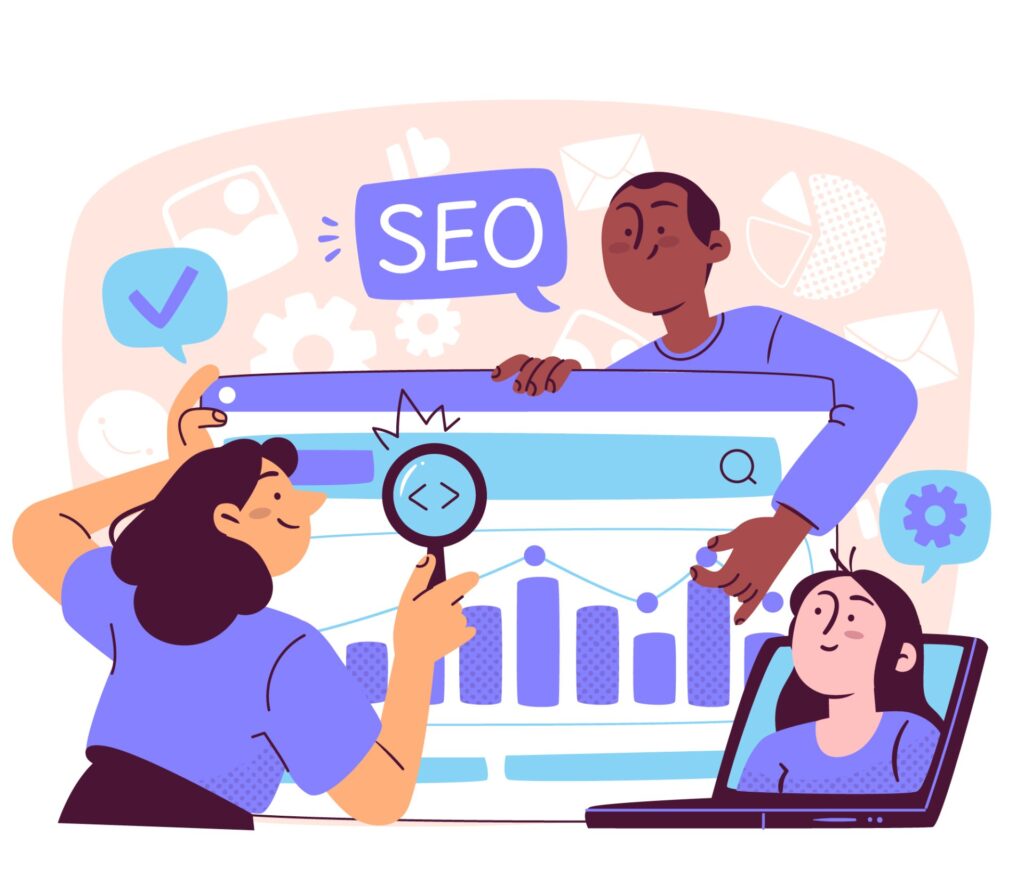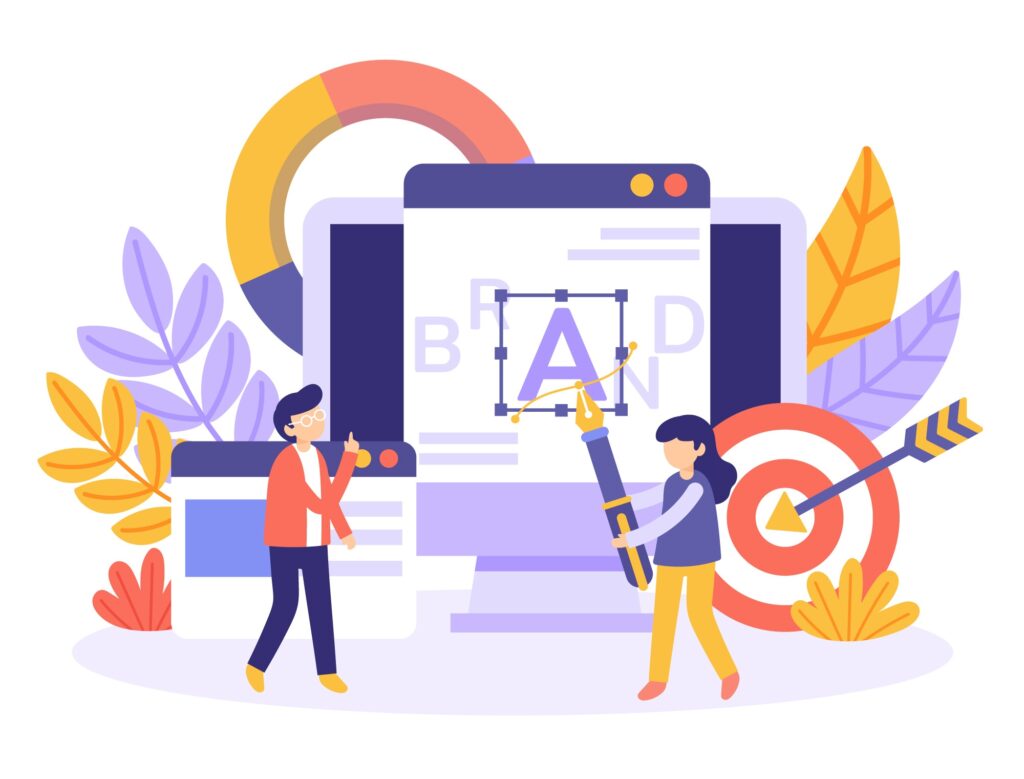Table of Contents
Introduction
In today’s digital world, having a well-designed website is crucial for any business or individual looking to make an impact online. A good website design not only attracts visitors but also keeps them engaged, helping to convert them into loyal customers. This article explores the top 11 benefits of good website design and how it can contribute to your online success.
Benefit 1: Enhanced User Experience

Good website design significantly improves navigation and usability, making it easier for visitors to find the information they need. Websites with clear layouts, intuitive navigation menus, and a logical structure ensure that users can effortlessly browse through the content. The importance of user experience cannot be overstated; a seamless and enjoyable browsing experience is key to keeping visitors on your site longer and encouraging them to return.
Example: Websites like Apple and Amazon are prime examples of user-friendly designs. Apple’s website, for instance, offers a sleek, minimalist design with straightforward navigation, enhancing the overall user experience. Amazon’s site is designed to help users quickly find products, read reviews, and make purchases with minimal hassle. This kind of design is a hallmark of good website design, focusing on the user’s journey from start to finish.
A good website design also considers the different types of users who may visit your site. For instance, first-time visitors might need more guidance, such as clear call-to-action buttons and helpful introductory content, while returning visitors might appreciate quick access to their favourite sections. By understanding and catering to the needs of different user segments, you can create a more personalized and effective browsing experience.
Benefit 2: Better First Impressions

The aesthetics of your website play a crucial role in making a positive first impression on visitors. A well-designed website with an appealing layout, attractive colour scheme, and high-quality images can captivate visitors at first glance. First impressions are often formed within seconds, and they can significantly influence whether a visitor decides to stay on your site or leave.
Example: According to a study by ResearchGate, it takes only 50 milliseconds for users to form an opinion about a website, and 94% of first impressions are design related. This statistic underscores the importance of investing in a good website design. First impressions matter, and good website design ensures, they are positive.
Visual appeal isn’t the only factor in making a good first impression. The functionality and speed of your website also play a critical role. If a website looks great but takes too long to load, visitors may become frustrated and leave. On the other hand, a visually appealing website that loads quickly can create a sense of professionalism and reliability, encouraging visitors to explore further.
Boost your online visibility and traffic
Get personalized insights to elevate your online presence. Our experts will help you maximize your marketing efforts for real results.
Benefit 3: Improved SEO Performance

A well-designed website can contribute to better search engine rankings. SEO-friendly design elements, such as responsive design, fast loading times, and proper use of HTML tags, help search engines crawl and index your site more effectively. Good website design integrates these SEO practices seamlessly, ensuring that your site is not only attractive but also optimized for search engines.
Example: Responsive design ensures that your website looks and functions well on all devices, which is a key factor in Google’s ranking algorithm. Similarly, optimizing site speed can reduce bounce rates and improve user engagement, further boosting your SEO performance. A good website design integrates these SEO elements seamlessly.
In addition to technical SEO aspects, good website design also includes content optimization. This means using relevant keywords naturally throughout your content, ensuring that each page has a unique and descriptive title, and providing meta descriptions that accurately summarize the content of your pages. By combining technical and content SEO strategies, you can improve your website’s visibility in search engine results and attract more organic traffic.
Benefit 4: Increased Mobile Traffic

With the rise of mobile internet usage, having a responsive website design is essential. A responsive design adapts to different screen sizes, providing a seamless browsing experience for mobile users. This is particularly important as more people use smartphones and tablets to browse the web, shop online, and access information on the go.
Example: According to Statista, mobile devices accounted for over 50% of global web traffic in 2020. This statistic highlights the importance of catering to mobile users through responsive design. Ensuring a good website design means considering mobile traffic and usability.
A good website design also ensures that mobile users can easily navigate the site, read content, and complete actions such as filling out forms or making purchases. This involves using larger fonts for readability, touch-friendly buttons, and streamlined navigation menus. By prioritizing mobile usability, you can enhance the experience for mobile users and capture a larger share of mobile traffic.
Benefit 5: Higher Conversion Rates

Good design can guide user behaviour and increase conversion rates by making it easier for visitors to take desired actions, such as making a purchase or signing up for a newsletter. Effective design elements, such as clear call-to-action buttons, persuasive copy, and visually appealing product displays, can encourage visitors to convert.
Example: Case studies have shown that websites that undergo a redesign often see a significant boost in conversion rates. For instance, Crazy Egg reported a 30% increase in conversions after redesigning their website to improve user experience. This demonstrates how good website design directly impacts conversion rates.
A good website design also considers the entire customer journey, from the moment a visitor lands on the site to the final conversion. This includes creating a logical flow of information, minimizing distractions, and providing reassurances such as customer testimonials and trust badges. By optimizing each step of the journey, you can increase the likelihood of conversions and drive more sales or sign-ups.
Benefit 6: Competitive Advantage

A well-designed website can set you apart from competitors. In a crowded online market, a visually appealing and easy-to-navigate website can make a lasting impression on visitors, encouraging them to choose your services over others. Good website design not only attracts visitors but also helps retain them, reducing the chances of them switching to competitors.
Example: Compare two websites in the same industry—one with a cluttered, outdated design and another with a modern, user-friendly interface. The latter is more likely to attract and retain customers, giving it a competitive edge. Good website design provides a clear competitive advantage.
In addition to visual appeal and usability, good website design also involves staying current with industry trends and innovations. This means regularly updating your website to incorporate new design elements, technologies, and user preferences. By staying ahead of the curve, you can maintain a competitive edge and continuously attract and engage visitors.
Benefit 7: Consistent Brand Identity

A cohesive design reinforces your brand identity by ensuring that all elements of your website, from colours and fonts to images and layouts, are aligned with your brand’s message and values. Good website design helps create a strong and memorable brand presence, making it easier for visitors to recognize and trust your brand.
Example: Brands like Coca-Cola and Nike have strong design elements that are instantly recognizable and reflect their identity. Consistent design across their websites helps reinforce their brand image and build trust with their audience. Good website design is key to maintaining a consistent brand identity.
A good website design also extends to all touchpoints of your brand, including social media profiles, email newsletters, and advertising materials. By maintaining a consistent design language across all channels, you can create a unified brand experience that strengthens brand recognition and loyalty.
Benefit 8: Lower Bounce Rates

Engaging website design can keep visitors on your site longer, reducing bounce rates. By providing a visually appealing and user-friendly experience, you can encourage visitors to explore more pages on your site. Lower bounce rates indicate that visitors find your content valuable and are willing to spend more time engaging with it.
Example: Data from Google Analytics can show a decrease in bounce rates after a website redesign. For instance, a study found that a redesigned website with improved usability saw a 15% reduction in bounce rates. This is a direct benefit of good website design.
A good website design also involves creating compelling content that captures the attention of visitors and encourages them to stay longer. This includes using high-quality images and videos, providing valuable and informative content, and incorporating interactive elements that engage users. By creating a rich and engaging experience, you can reduce bounce rates and increase user engagement.
Benefit 9: Better User Engagement

Design features such as videos, infographics, and animations can enhance user interaction and engagement, making your content more appealing and easier to digest. Good website design leverages these elements to create a dynamic and interactive experience that captures the attention of visitors.
Example: Interactive elements like quizzes, polls, and sliders can increase user engagement by making the browsing experience more dynamic and enjoyable. Websites like BuzzFeed use these features effectively to keep their audience engaged. Good website design includes these interactive elements.
In addition to interactive content, good website design also involves creating a user-friendly interface that makes it easy for visitors to interact with your site. This includes providing clear navigation menus, intuitive search functions, and easy-to-use forms. By making it easy for users to find and interact with your content, you can increase user engagement and drive more conversions.
Benefit 10: Improved Accessibility

Accessible design is crucial for ensuring that all users, including those with disabilities, can navigate and interact with your website. Features like alt text for images, keyboard navigation, and screen reader compatibility make your site more inclusive. Good website design prioritizes accessibility, ensuring that all users can have a positive experience.
Example: The Web Content Accessibility Guidelines (WCAG) provide a framework for creating accessible websites. Implementing these guidelines can help you reach a broader audience and improve user satisfaction. Good website design always considers accessibility.
Accessibility also involves providing alternative formats for content, such as transcripts for videos and text descriptions for images. By making your content accessible to all users, you can ensure that everyone can benefit from your website, regardless
Example: The Web Content Accessibility Guidelines (WCAG) provide a framework for creating accessible websites. Implementing these guidelines can help you reach a broader audience and improve user satisfaction. Good website design always considers accessibility.
Benefit 11: Higher Customer Satisfaction and Trust
Professional website design can enhance customer satisfaction and trust. A well-designed website that looks credible and functions smoothly can instil confidence in your visitors, encouraging them to trust your brand and return for future interactions.
Example: Testimonials and reviews can highlight the positive impact of good design on customer satisfaction. For instance, a survey by Stanford University found that 75% of users judge a company’s credibility based on its website design. Good website design is fundamental to building customer trust.
Conclusion
In summary, investing in good website design offers numerous benefits, from enhancing user experience and improving SEO performance to increasing mobile traffic and boosting conversion rates. By prioritizing design, you can gain a competitive advantage, reinforce your brand identity, and ultimately achieve higher customer satisfaction and trust. Good website design is not just an aesthetic choice but a strategic one that drives business success.
FAQ’s
Which web designing approach is best?
Responsive Web Design (RWD): Adapts to different screen sizes using flexible grids and media queries.
What are the 7 C’s of effective website design?
The 7 C's of effective website design are:
- Context: Overall layout and design that aligns with the brand.
- Content: Relevant, high-quality information.
- Community: Features for user interaction and community building.
- Customization: Personalized experiences for users.
- Communication: Clear interaction channels between the website and users.
- Connection: Integration with other platforms and services.
- Commerce: Smooth and secure e-commerce experience if applicable.
What are the features of a good website?
Features of a good website include:
- Clear Purpose: A well-defined goal that aligns with user needs.
- User-Friendly Navigation: Simple and intuitive navigation.
- Fast Load Times: Efficient coding and optimized images.
- Mobile Compatibility: Responsive design for all devices.
- High-Quality Content: Informative, engaging, and updated content.
- Strong Visual Design: Attractive and consistent design elements.
- SEO Optimization: Effective use of SEO practices.
- Security: Secure connections and data protection measures.
- Effective Call to Actions (CTAs): Clear and compelling CTAs guiding users towards desired actions.


